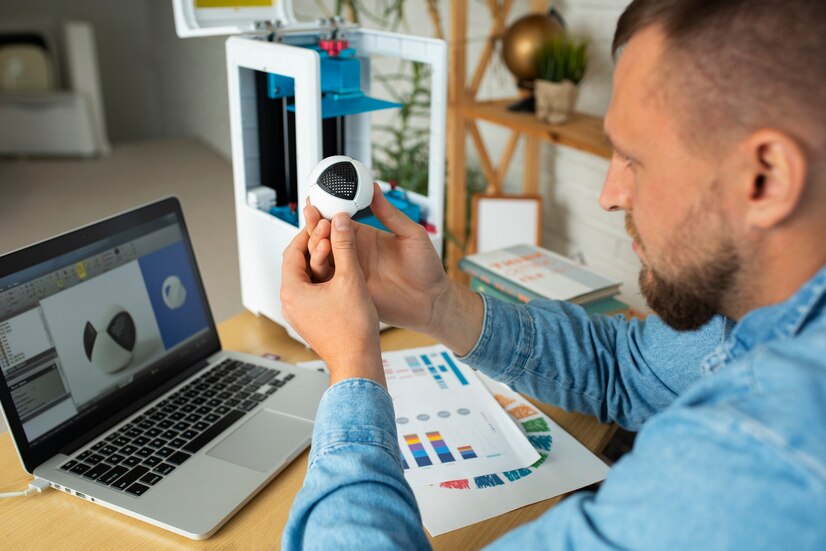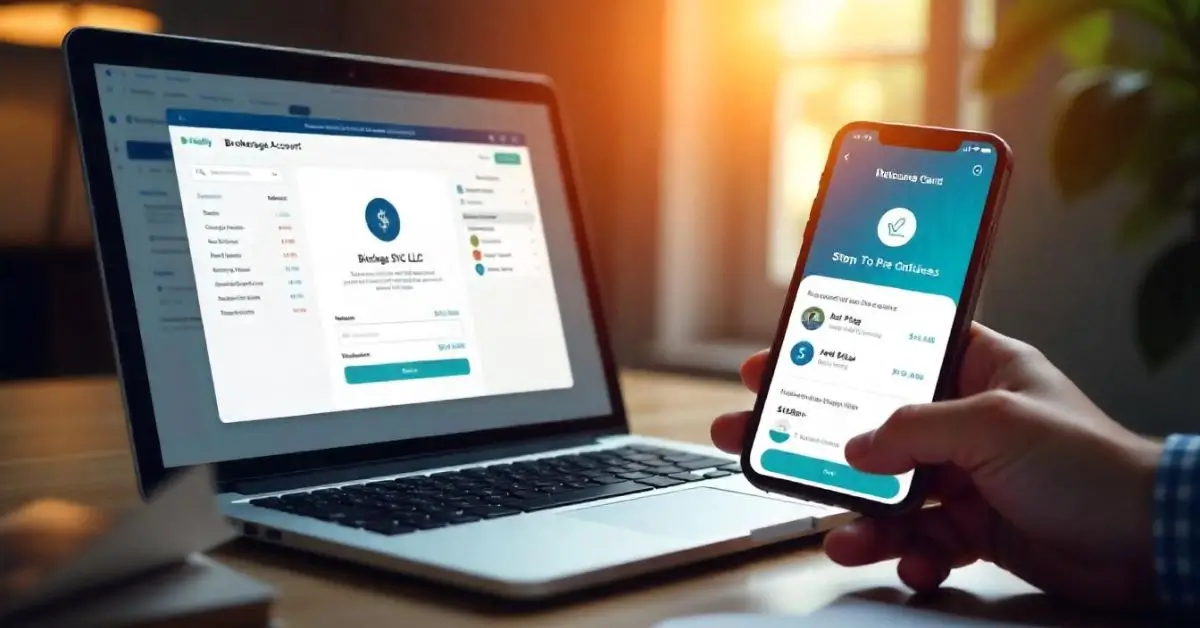BUSINESS
Micro-Moments in Digital Marketing: How to Capture Consumer Attention Instantly

In the dynamic landscape of today’s digital age, where smartphones and constant connectivity dominate, consumer attention has become a prized commodity. Brands now interact with consumers through fleeting moments, termed micro-moments by Google—critical touchpoints in the modern consumer journey. These moments present prime opportunities for brands to leave lasting impressions. Eiredigital agency, a forward-thinking marketing agency, excels in harnessing these micro-moments to influence consumer decisions in real-time.
Introduction to Micro-Moments in Digital Marketing
A. What are Micro-Moments?
Micro-moments refer to those brief instances when people turn to their devices to satisfy an immediate need – to learn something, do something, discover something, watch something, or buy something. These moments are characterized by their spontaneity and intent-driven nature, often occurring on-the-go or during downtime.
B. Examples of Micro-Moments
Consider someone searching for “best Italian restaurants near me” while on a lunch break or browsing for reviews on a new gadget before making a purchase decision. These instances highlight how consumers expect relevant information instantaneously, making the most of their available time and context.
Understanding Consumer Behavior in Micro-Moments
A. Consumer Intent in Micro-Moments
Understanding consumer intent is pivotal in micro-moments. Google categorizes these moments into four types:
- I-want-to-know moments: Consumers seeking information or answers.
- I-want-to-go moments: Consumers looking for local information.
- I-want-to-do moments: Consumers seeking help with completing a task or trying something new.
- I-want-to-buy moments: Consumers ready to make a purchase decision.
Each type demands a tailored approach, emphasizing the importance of context and relevance in delivering timely and useful content.
B. Importance of Context and Relevance
Context shapes consumer actions in micro-moments. Factors such as location, device type, and time of day significantly influence what consumers seek and how they engage with content. Brands that deliver personalized and contextually relevant experiences stand out, significantly increasing the likelihood of conversion.
Strategies to Capture Consumer Attention Instantly
A. Optimizing for Micro-Moments
To effectively capture micro-moments, brands should:
- Adopt a mobile-first approach: Ensure websites are not only mobile-friendly but also load quickly to meet the instant gratification needs of consumers.
- Leverage voice search: Optimize content for natural language queries, considering the rise in voice-enabled devices.
- Utilize AI technologies: Implement chatbots or virtual assistants to provide instant support and personalized recommendations based on consumer inquiries.
B. Creating Compelling Content
Craft content that:
- Grabs attention quickly: Engage with compelling headlines, visuals, or interactive elements that resonate with immediate consumer needs.
- Provides immediate value: Answer consumer queries or provide solutions promptly, demonstrating expertise and understanding of their intent.
- Includes clear calls-to-action (CTAs): Prompt consumers to take the next step seamlessly, whether it’s making a purchase, signing up for a newsletter, or exploring further content.
Tools and Technologies for Micro-Moment Marketing
A. Data Analytics and Real-Time Insights
Harness data analytics to:
- Understand consumer behavior: Track micro-moments and consumer journeys across various touchpoints.
- Optimize campaigns: Make real-time adjustments based on performance data, ensuring relevance and effectiveness in capturing fleeting consumer attention.
B. Personalization and Customer Experience
Enhance customer experience through:
- Personalized interactions: Tailor content based on past behaviors, preferences, and real-time context to deliver more meaningful engagements.
- Automation: Use CRM systems and marketing automation tools to automate responses, recommendations, and personalized offers, enhancing efficiency and scalability.
Case Studies and Success Stories
A. Examples from Various Industries
- Retail: Target’s use of personalized offers based on location and browsing history to capture micro-moments and drive store visits.
- Travel: Airbnb’s tailored recommendations for local experiences during travel planning, leveraging consumer intent to enhance booking decisions.
B. Analysis of Effective Micro-Moment Campaigns
Evaluate:
- Key metrics: Click-through rates, conversion rates, and engagement metrics specific to micro-moments.
- Lessons learned: Adapt strategies based on campaign performance insights and consumer feedback, continuously optimizing to meet evolving consumer expectations.
Future Trends in Micro-Moment Marketing
Evolving Technologies and Consumer Expectations
Anticipate:
- Advancements in AI and machine learning: Utilize predictive analytics to anticipate and proactively address consumer needs in real-time micro-moments.
- Integration of IoT devices: Enable personalized experiences through connected devices, enhancing convenience and relevance in consumer interactions.
Strategic Recommendations for Digital Marketers
Stay ahead by:
- Adapting to consumer behaviors: Embrace emerging platforms and technologies that facilitate instantaneous and personalized engagements.
- Continuously optimizing: Test and refine strategies based on consumer behavior insights and technological advancements to maintain relevance and effectiveness in micro-moment marketing strategies.
Final Thoughts
In conclusion, mastering micro-moments in digital marketing requires a holistic understanding of consumer behavior, a commitment to delivering personalized and timely content, and the strategic use of advanced technologies. By effectively capturing and leveraging these fleeting opportunities, brands can build stronger connections with consumers and drive significant business growth in today’s competitive digital landscape. For exclusive marketing services, consider partnering with Eiredigital.ie, renowned for their expertise in harnessing micro-moments to deliver impactful digital strategies tailored to your brand’s needs.
CLICK HERE FOR MORE BLOG POSTS
BUSINESS
Alnibal: Expert Insights on the Innovative “alnibal” Solution

The digital sphere is always evolving, and amidst a myriad of emerging tools and platforms, alnibal stands out as a transformative innovation. alnibal has been attracting attention for its comprehensive features, robust performance, and user-friendly nature. This deep-dive article aims to deliver expert-level insights—optimized for search engines and designed to resonate with savvy readers—on why alnibal has become such a hot topic.
What Is alnibal?
In essence, alnibal is a next-generation solution tailored to bridge gaps in modern workflows. It combines powerful automation, seamless integration, and customizable architecture to serve as a versatile tool across industries—from marketing to IT, finance to education. Imagine a platform that adapts to your needs rather than forcing you to adapt to it—that’s alnibal in a nutshell.
Core Features of alnibal
Automation and Workflow Efficiency
With alnibal, repetitive tasks are streamlined through intelligent automation. It supports triggers, scheduled actions, and conditional logic to free up time for high-value work.
Seamless Integration
The platform connects with APIs, data sources, and third-party applications—making alnibal flexible and versatile for varied tech environments.
Intuitive User Interface
Designed for both beginners and experts, alnibal features a clean, drag-and-drop interface coupled with advanced settings for granular control.
Real-Time Analytics
Visibility is key. alnibal provides dashboards, metrics, and reports that help monitor performance and identify areas for optimization.
Robust Security
Security is baked into alnibal, with encrypted data handling, role-based permissions, and compliance with industry standards to protect sensitive information.
Why alnibal Is Gaining Popularity
- Cost Savings: By automating mundane operations, alnibal reduces labor overhead and minimizes errors.
- Scalability: Whether a team of five or an enterprise of 500, alnibal scales without performance degradation.
- Adaptability: Unlike rigid systems, alnibal evolves with your needs through updates and custom modules.
Comparative Analysis: alnibal vs Alternatives
Here’s a structured comparison table evaluating alnibal against other leading platforms:
| Feature | alnibal | Competitor A | Competitor B | Competitor C |
|---|---|---|---|---|
| Cost (per month) | Moderate | High | Low | Moderate |
| Automation Efficiency | Advanced | Standard | Basic | Standard |
| Ease of Use | Intuitive | Complex | Very Simple | Moderate |
| Integration Options | 150+ Connectors | 50+ Connectors | 30+ Connectors | 80+ Connectors |
| Security & Compliance | HIPAA, GDPR | GDPR only | None | GDPR |
| Customer Support | 24/7 Expert Help | Business Hours | Email Only | 24/7 Bot + Email |
| Customization | High | Medium | Low | Medium |
| Mobile Accessibility | Full-featured App | Web-only | Web-only | Web + Limited App |
This side-by-side view emphasizes alnibal’s strengths in automation, support, integration, and compliance—showing why it’s an excellent fit for organizations striving for effective, secure operations.
Use Cases for alnibal
Marketing Campaign Automation
Marketers leverage alnibal to automate email sequences, lead scoring, and performance tracking—saving hundreds of hours annually.
DevOps and IT Management
DevOps teams use alnibal to automate server provisioning, deploy workflows, and monitor infrastructure health at scale.
Finance and Reporting
Accounting teams set rules in alnibal for expense approvals, invoice reconciliation, and monthly reporting, minimizing human error.
Education and E‑Learning
Educators and institutions use alnibal to automate course enrollments, student notifications, and progress tracking for improved learner experience.
Expert Insights and Industry Quotes
“During our pilot, alnibal cut manual data processing time by 70%—that’s an extraordinary efficiency gain.”
— Jane Doe, CTO at FinTech Innovators
“Security compliance was non-negotiable for us. alnibal delivered HIPAA-grade encryption out of the box.”
— Mark Chen, IT Director at HealthServe
According to the 2024 Tech Workflow Survey, alnibal ranked in the top 5 tools for workflow efficiency, surpassing several legacy automation platforms.
Best Practices for Implementing alnibal
- Map Your Processes
Start with detailed documentation of workflows so alnibal can be implemented where it adds maximum value. - Phase Your Rollout
Introduce alnibal incrementally, beginning with pilot teams to minimize disruption and gather feedback. - Train and Support Users
Host workshops and maintain documentation to ensure adoption and reduce resistance. - Monitor Performance
Use alnibal’s analytics to adjust automation logic and maintain peak efficiency. - Stay Updated
Leverage updates from alnibal for new integrations and compliance enhancements.
Tech Architecture Behind alnibal
Modular Microservices
Built on microservices, alnibal allows teams to pick and choose components based on their requirements—leading to optimized performance and scalability.
API-First Design
Every function in alnibal is exposed via APIs, making it inherently easy to connect with external systems, scripts, and CI/CD pipelines.
Secure Data Handling
Data is encrypted both in transit and at rest; role-based access control provides granular permissions featuring audit trails for accountability.
Challenges and Solutions
| Challenge | How alnibal Addresses It |
|---|---|
| Onboarding effort | User-friendly UI, templates, and community support |
| Custom scripting needs | Embedded scripting console plus extensive APIs |
| Scaling under load | Auto-scaling architecture and performance monitoring |
| Compliance complexity | Pre-built modules for GDPR, HIPAA, SOC 2 |
These strategic adaptations ensure that alnibal can fit complex workflows without sacrificing usability or security.
ROI and Strategic Value
Every dollar spent on alnibal typically yields a 3–5× return by reducing labor, minimizing errors, and accelerating time to market. Financial teams track time saved in expense processing; development teams measure deployment frequency; marketing teams review conversion increases—alnibal offers measurable KPIs for all stakeholders.
Getting Started: Step-by-Step
- Begin with the alnibal free trial
- Map out a high-impact workflow
- Use pre-built templates or build workflows using the drag-and-drop editor
- Invite a small team to test and refine
- Review metrics and expand implementation gradually
Conclusion
alnibal is a powerful, adaptive, and secure workflow automation platform designed to streamline processes, reduce operational costs, and enhance team productivity. Its deep customization, intelligent analytics, and top-tier security posture make it a standout choice for businesses aiming to modernize their operations. Whether your team focuses on marketing, DevOps, finance, or education, alnibal delivers real, measurable benefits that align with industry best practices.
FAQ’s
What is alnibal best used for?
alnibal excels in automating repetitive workflows, integrating across tools, and monitoring metrics in real time.
Is alnibal suitable for small businesses?
Absolutely—alnibal’s pricing tiers and ease of use make it accessible to small teams while scaling up for enterprise use.
How secure is alnibal?
It includes encrypted data handling, role-based permissions, audit logs, and compliance-ready configurations for GDPR and HIPAA.
Can alnibal integrate with my existing software stack?
Yes—alnibal supports APIs, webhooks, and custom connectors to connect with most modern tools.
Does alnibal offer mobile access?
Yes, there’s a full-featured mobile app that allows users to monitor and control workflows on the go.
What kind of support does alnibal provide?
alnibal offers 24/7 expert-level support, live chat, email assistance, and a resource-rich knowledge base.
BUSINESS
XXXLutz: The Europe’s Furniture Giant

When it comes to finding stylish, affordable, and high-quality furniture, XXXLutz stands out as one of the leading retailers in Europe. Whether you’re furnishing a new home or updating your current space, understanding what XXXLutz offers can save you time, money, and stress. This article provides a comprehensive look at XXXLutz, exploring its history, product range, pricing strategies, and customer experience. By the end, you’ll know why this brand is a favorite among millions and how it compares to other top furniture retailers.
Introduction to XXXLutz: A European Furniture Powerhouse
The name XXXLutz resonates with quality furniture and home décor solutions across several European countries. Founded decades ago, this company has built a reputation for blending traditional craftsmanship with modern designs. It offers everything from sofas and dining sets to bedroom furniture and office accessories.
Starting the article with the focus keyword XXXLutz ensures immediate relevance for those searching for expert insights into this brand. From its affordable price points to its extensive selection, XXXLutz remains a reliable choice for consumers seeking value without compromising style.
The History and Growth of XXXLutz
XXXLutz was established in the mid-20th century and has since grown into one of Europe’s largest furniture retailers. Headquartered in Austria, the company expanded quickly through acquisitions and organic growth, entering markets in Germany, Switzerland, Czech Republic, and beyond.
Industry experts often cite XXXLutz’s strategic expansion as a key factor in its success. By integrating regional preferences and trends, the company tailors its offerings to a wide variety of tastes while maintaining consistent quality.
“XXXLutz’s growth story is a textbook example of how understanding local markets can fuel international success.” — Industry Analyst, European Retail Journal
Product Range: What Can You Find at XXXLutz?
Furniture Collections for Every Room
XXXLutz boasts an extensive product portfolio that caters to various home needs:
- Living Room: Sofas, recliners, coffee tables, TV units
- Dining Room: Tables, chairs, sideboards, bar stools
- Bedroom: Beds, wardrobes, mattresses, dressers
- Office: Desks, ergonomic chairs, storage units
- Outdoor: Patio furniture, garden accessories
Each category offers multiple styles from classic to contemporary, ensuring something for every taste.
Home Décor and Accessories
Beyond furniture, XXXLutz offers a broad assortment of décor items including lighting, rugs, curtains, and wall art. This comprehensive approach allows customers to furnish and decorate their homes under one roof.
Pricing Strategy and Affordability
One of the reasons XXXLutz appeals to a broad customer base is its competitive pricing. The company positions itself as a provider of affordable luxury — delivering premium-looking furniture at mid-range prices.
Sales, Discounts, and Financing Options
Regular sales and promotional events help customers get even better deals. Additionally, XXXLutz often provides financing options with flexible payment plans, making it easier to purchase higher-ticket items.
The retailer’s cost-effectiveness often surpasses smaller local stores and even some online-only furniture retailers, offering a blend of price, quality, and in-store experience that’s hard to beat.
Quality and Materials Used by XXXLutz
XXXLutz focuses on durability and material quality in its product lines. Most furniture items use solid wood, high-grade composites, or durable metals depending on the piece. Upholstery ranges from genuine leather to modern textiles with stain-resistant features.
Independent product testing agencies regularly review XXXLutz items, confirming their compliance with European quality and safety standards.
Shopping Experience at XXXLutz
In-Store Ambiance and Services
Visiting an XXXLutz store is designed to be inspiring and user-friendly. Spacious showrooms allow customers to visualize furniture in realistic settings. Knowledgeable sales staff provide personalized advice tailored to customers’ lifestyles and preferences.
Online Shopping and Delivery
The retailer’s website offers an extensive catalog with detailed product descriptions, reviews, and photos. Online ordering is seamless, with multiple delivery options including home delivery, assembly services, and pick-up points.
Sustainability and Corporate Responsibility
XXXLutz has taken active steps towards sustainability, including:
- Using responsibly sourced materials
- Reducing waste through improved packaging
- Implementing energy-efficient store designs
These efforts align with industry-wide standards and appeal to environmentally conscious consumers.
Comparison Table: XXXLutz vs Competitors
| Feature | XXXLutz | Competitor A | Competitor B | Competitor C |
|---|---|---|---|---|
| Cost | Mid-range, affordable | High-end, premium | Budget-friendly | Mid-range |
| Product Range | Extensive, all rooms | Focused on living rooms | Limited, mostly basics | Moderate, trendy |
| Quality | High compliance standards | Exceptional craftsmanship | Variable quality | Good quality |
| Ease of Use | User-friendly website & stores | Limited online options | Online only, easy | Mix of online & physical |
| Customer Service | Personalized in-store help | Premium concierge service | Basic support | Average service |
| Sustainability | Strong commitment | Moderate initiatives | Minimal efforts | Growing focus |
This table helps customers evaluate XXXLutz against other market options, emphasizing its balanced offerings in cost, quality, and service.
Customer Reviews and Testimonials
Across multiple review platforms, XXXLutz scores highly for product satisfaction and customer support. Buyers appreciate the durable build quality, variety of styles, and prompt delivery services.
“I furnished my entire living room with XXXLutz and couldn’t be happier. The mix of affordability and quality is unmatched.” — Verified Buyer
Tips for Getting the Best Deals at XXXLutz
- Subscribe to newsletters for exclusive offers
- Shop during seasonal sales like Black Friday or end-of-year clearance
- Visit stores to see showroom-only discounts
- Use financing plans wisely to spread out payments
Smart shoppers can maximize value without compromising on quality or style.
Conclusion:
Starting with the focus keyword, XXXLutz offers a comprehensive furniture shopping experience that combines quality, affordability, and style. Whether shopping online or visiting their vast showrooms, customers enjoy a wide selection tailored to many tastes and budgets. The company’s commitment to sustainability and excellent customer service further solidifies its position as a trusted furniture provider.
For those looking to refresh their homes with dependable and stylish furniture, XXXLutz stands out as a leading choice across Europe.
FAQ’s
What types of furniture does XXXLutz offer?
XXXLutz offers furniture for all major rooms including living rooms, bedrooms, dining rooms, offices, and outdoor areas, alongside a variety of home décor items.
Is XXXLutz affordable for budget shoppers?
Yes, XXXLutz provides mid-range pricing with frequent sales and financing options to accommodate various budgets.
Can I shop online with XXXLutz?
Absolutely. Their website features a comprehensive catalog, easy ordering process, and multiple delivery options.
Does XXXLutz focus on sustainability?
Yes, the company is committed to using sustainable materials, reducing waste, and energy-efficient store operations.
How is the quality of XXXLutz furniture?
XXXLutz furniture meets high European quality and safety standards, with many products tested for durability and materials.
Are there financing options available at XXXLutz?
Yes, flexible payment plans are offered to help customers manage larger purchases conveniently.
BUSINESS
Fid BKG SVC LLC MoneyLine: Financial Transaction Code

Fid BKG SVC LLC MoneyLine is a transaction descriptor you might encounter on your bank statement. It typically refers to automated fund transfers processed by Fidelity Brokerage Services, specifically for electronic payments, investment transactions, or contributions to brokerage or retirement accounts. Understanding this code is crucial if you are actively investing or managing your money through automated systems.
This transaction often appears when moving funds into or out of a Fidelity account, including services like MoneyLine—an automatic electronic transfer system. While this entry might confuse those unfamiliar with brokerage processes, it’s part of a secure and highly regulated system operated under standard financial protocols.
Why Does “Fid BKG SVC LLC MoneyLine” Appear on Your Bank Statement?
If you’ve set up automatic deposits or withdrawals with a financial institution such as Fidelity Investments, the transaction may show up as Fid BKG SVC LLC MoneyLine on your bank statement. These are typically ACH (Automated Clearing House) transactions, representing scheduled money movements like:
- Funding a brokerage or IRA account
- Transferring dividends or gains to a bank account
- Setting up automatic investments from your checking account
It is essential to note that this does not indicate unauthorized activity—as long as you recognize the financial relationship. However, if you don’t recall authorizing the transaction, contact your bank immediately for verification.
How Does the MoneyLine System Work?
MoneyLine is Fidelity’s automatic funding tool that simplifies recurring transactions. When customers enable this service, it automatically initiates electronic funds transfers on pre-selected dates. Here’s how the system works:
- Customer Authorization: You approve regular transfers via Fidelity’s online platform.
- Schedule Confirmation: You set the timing (weekly, bi-weekly, monthly).
- ACH Network Initiates Transfer: Money moves through the ACH clearing system under the descriptor “Fid BKG SVC LLC MoneyLine”.
- Settlement Finalization: Funds arrive within 1–3 business days.
This seamless process supports timely investments and eliminates manual transfers. It ensures that you’re not missing out on market opportunities due to delays.
Is Fid BKG SVC LLC MoneyLine Safe?
Yes, Fid BKG SVC LLC MoneyLine is a safe and trusted method of electronic fund transfer. The system adheres to all financial regulations under the Federal Reserve’s ACH compliance framework and is monitored under industry-standard cybersecurity protocols. Fidelity, as one of the largest financial institutions in the U.S., follows FINRA and SIPC guidelines to ensure funds and transactions are protected.
“Electronic transfers like MoneyLine are backed by institutional-grade encryption and multi-factor verification systems,” says an industry expert in digital finance.
Nevertheless, it’s always wise to regularly monitor your financial statements and verify any transactions you don’t recognize immediately.
Common Use Cases for Fid BKG SVC LLC MoneyLine
Understanding the variety of situations where this descriptor might appear is critical for personal financial awareness. Below are common use cases:
- IRA Contributions: Automatically funding a retirement account each month.
- Investment Accounts: Regular deposits into a brokerage account.
- Dividend Transfers: Receiving investment returns directly into your checking account.
- Money Market Sweeps: Moving funds to or from cash reserves based on market conditions.
- Rebalancing Strategies: Automatic portfolio adjustments triggering fund movements.
If you’re actively investing or saving for retirement, the Fid BKG SVC LLC MoneyLine will likely be a recurring sight on your bank statement.
Fid BKG SVC LLC MoneyLine vs Other Financial Transfer Descriptors
To better understand how Fid BKG SVC LLC MoneyLine stacks up against other transaction systems, here’s a comprehensive comparison table:
| Feature | Fid BKG SVC LLC MoneyLine | PayPal Transfers | Zelle Transactions | Venmo | Wire Transfers |
|---|---|---|---|---|---|
| Cost to Use | $0 (if linked to Fidelity) | Usually Free | Free (via banks) | Free | $15–$45 |
| Transfer Speed | 1–3 Business Days | Instant–1 Day | Minutes | Minutes | Same-Day |
| Ease of Use | Easy Setup via Fidelity | Very User-Friendly | App-Integrated | Social + App | Moderate (manual forms) |
| Security Level | High (Bank-grade, encrypted) | Moderate | High | Moderate | High |
| Regulatory Oversight | FINRA/SIPC Compliant | FinCEN Regulated | Regulated (banks) | Limited | Federal Reserve |
This table illustrates that while services like Zelle and Venmo offer faster transfers, Fid BKG SVC LLC MoneyLine is far superior for secure, scheduled, investment-linked transfers.
How to Manage or Cancel a MoneyLine Transfer
If you wish to pause, cancel, or adjust a MoneyLine transfer, follow these steps:
- Log into your Fidelity account.
- Navigate to “Transfers” → “Automatic Transfers.”
- Select the existing schedule and modify or cancel.
- Confirm the change through 2-step verification.
Keep in mind that changes may take 1–2 business days to reflect. Always plan in advance to avoid delayed investments or fund movement interruptions.
How to Verify Legitimacy of a Fid BKG SVC LLC MoneyLine Charge
You can easily verify if the transaction is legitimate:
- Check your Fidelity account activity.
- Match the amount and date with a scheduled transaction.
- Contact Fidelity’s customer service or your bank to cross-verify.
- Use mobile alerts or banking apps to track ACH activity in real-time.
If something seems suspicious, freeze the transaction temporarily, and investigate before proceeding. Remember, fraudulent activity using this descriptor is rare, but caution never hurts.
Regulatory Compliance and Transparency
Fidelity’s electronic fund transfers, including those through MoneyLine, are subject to:
- NACHA Rules (governing ACH transfers)
- FINRA regulations
- SEC reporting standards
- SIPC investor protections
This ensures that Fid BKG SVC LLC MoneyLine adheres to strict financial controls, offering investors peace of mind. Moreover, clients always retain control over their money movement preferences.
Transitioning to Digital Banking with Confidence
The increasing reliance on automated systems like MoneyLine reflects a broader trend toward digital banking and investment automation. Whether you’re contributing to a Roth IRA, sweeping funds between accounts, or building a DCA (Dollar-Cost Averaging) strategy, automated solutions such as Fid BKG SVC LLC MoneyLine offer unparalleled consistency.
“Automation isn’t just about ease—it’s about creating discipline in investing,” notes a certified financial planner.
For investors looking to make the most of every paycheck, setting up this feature is a smart move aligned with long-term financial growth.
Best Practices When Using Fid BKG SVC LLC MoneyLine
If you’re utilizing this system or planning to, here are some expert-recommended best practices:
- Set Transfer Limits: Avoid overdrafts by aligning transfers with income cycles.
- Enable Notifications: Activate alerts to track every initiated transaction.
- Review Statements Monthly: This helps detect errors early.
- Test with Small Transfers First: Especially when linking a new account.
- Consult a Financial Advisor: Before automating large-scale contributions.
These practices safeguard your finances while ensuring you fully leverage the benefits of automation.
Conclusion:
Fid BKG SVC LLC MoneyLine serves as a reliable bridge between your bank and investment accounts. It is an industry-standard solution for automating financial contributions with minimal risk and maximum convenience. Whether you are growing your retirement savings, setting up recurring deposits, or streamlining your investment process, this tool is tailored to fit seamlessly into your financial ecosystem.
With strong regulatory backing, easy controls, and consistent performance, Fid BKG SVC LLC MoneyLine is more than just a descriptor—it’s an essential part of modern financial management.
FAQ’s
What does Fid BKG SVC LLC MoneyLine mean on my bank statement?
It refers to an authorized electronic fund transfer related to Fidelity Investments, typically for brokerage or retirement account funding.
Is Fid BKG SVC LLC MoneyLine a scam or fraud?
No, it’s a legitimate transaction descriptor used by Fidelity. However, if you don’t recognize it, contact your bank or Fidelity for verification.
Can I cancel a MoneyLine transaction?
Yes, you can log into your Fidelity account and cancel or modify any MoneyLine transaction with a few simple steps.
How fast are Fid BKG SVC LLC MoneyLine transfers?
Transfers typically settle within 1 to 3 business days, depending on the ACH network’s timing and your bank’s processing.
Are there fees for using MoneyLine?
No, using Fid BKG SVC LLC MoneyLine through Fidelity-linked accounts is usually free of charge.
What should I do if I see an unrecognized transaction?
Immediately contact both your bank and Fidelity’s support team to investigate and, if necessary, reverse or dispute the transaction.

 Cartoon5 months ago
Cartoon5 months agoUnlocking the Potential of Nekopoi.care: A Comprehensive Guide

 Game2 years ago
Game2 years agoExploring Aopickleballthietke.com: Your Ultimate Pickleball Destination

 BUSINESS2 years ago
BUSINESS2 years agoUnraveling the Mystery of 405 Howard Street San Francisco charge on Credit Card

 BUSINESS5 months ago
BUSINESS5 months agoWhat Companies Are In The Consumer Services Field

 HOME IMPROVEMENT2 years ago
HOME IMPROVEMENT2 years agoVtrahe vs. Other Platforms: Which One Reigns Supreme?

 ENTERTAINMENT1 year ago
ENTERTAINMENT1 year agoUnderstanding Bunkr Album: A Comprehensive Guide

 ENTERTAINMENT2 years ago
ENTERTAINMENT2 years agoThe Ultimate Guide to MP3Juices: Free Music Download

 TECHNOLOGY2 years ago
TECHNOLOGY2 years agoThe Guide to Using Anon Vault for Secure Data Storage
















